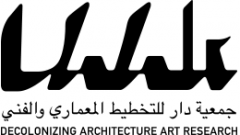During the period of the two world wars, under the fascist regime, Italy built a vast number of public buildings, housing and monuments that have shaped Italian cities and former Italian-occupied cities such as Asmara, Addis Ababa, Rhodes and Tripoli. In the last years, these built structures have been celebrated and completely detached from the fascist, violent and genocidal regime that produced them. With the re-emergence of today’s fascist ideologies in Europe – and the arrival of populations from north and east Africa – it becomes urgent to ask: What kind of heritage is the fascist-colonial heritage? How do the material traces of the Italian empire today acquire different meanings in the context of migration from the ex-colonies? Should this heritage be demolished, simply reused or reoriented towards other objectives including reparations from Italian colonization?
As part of the 5x5x5 program of Manifesta 12 in Palermo, the Decolonizing Architecture Advanced Course taught by Alessandro Petti, professor in Architecture and Social Justice at the Royal Institute of Art (RIA) in Stockholm, presented a project for critical re-use of the Casa del Mutilato – a fascist building designed by Giuseppe Spatrisano and inaugurated by Benito Mussolini in 1936. The project took the form of an architectural intervention; a prosthesis to the Casa del Mutilato which acted as a tool to reorient the future uses of the building and pragmatically start a much-needed restoration process.
Invited guests, including Mia Fuller, Adelita Husni-Bey, Nicola Labanca, Shourideh C.
Molavi, Peter Lang, Vittoria Capresi, Sandi Hilal, Cristina Lucas, Andrea Bagnato, Anna Positano, Emilio Distretti, Rahel Shawl debated the legacies and ruins of Italian fascist architecture and their mutilated histories in a symposium.
Researchers, associations, and individuals were invited to take part in the first plenary meeting of the “Coalition for re-use of colonial fascist architecture.” The coalition was established with the aim of producing research and planning interventions for the re-use of colonial-fascist architecture by, and for communities that directly or indirectly have been affected by past and present forms of fascism and colonization. The struggle of decolonization once primarily located outside of Europe, today has moved within its borders. What the media calls the “refugee crisis” is, in reality, the incapacity of Europe to come to terms with five hundred years of colonialism. It is not possible to understand today’s displacement of people and migration flows, nor contemporary fascism, without a thorough knowledge of fascist-colonial architecture.
Dossier Casa del Mutilato
June 2018



